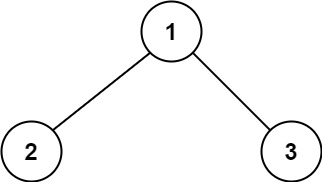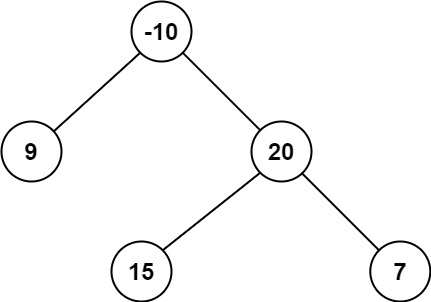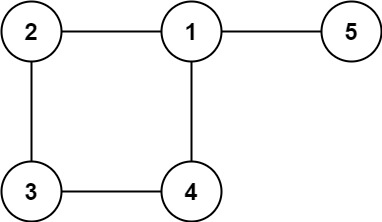2021-06-25 Daily-Challenge
Today I have done Binary Tree Maximum Path Sum and leetcode's June LeetCoding Challenge with cpp.
Binary Tree Maximum Path Sum
Description
A path in a binary tree is a sequence of nodes where each pair of adjacent nodes in the sequence has an edge connecting them. A node can only appear in the sequence at most once. Note that the path does not need to pass through the root.
The path sum of a path is the sum of the node's values in the path.
Given the root of a binary tree, return the maximum path sum of any path.
Example 1:

Input: root = [1,2,3]
Output: 6
Explanation: The optimal path is 2 -> 1 -> 3 with a path sum of 2 + 1 + 3 = 6.
Example 2:

Input: root = [-10,9,20,null,null,15,7]
Output: 42
Explanation: The optimal path is 15 -> 20 -> 7 with a path sum of 15 + 20 + 7 = 42.
Constraints:
- The number of nodes in the tree is in the range
[1, 3 * 104]. -1000 <= Node.val <= 1000
Solution
class Solution {
int answer = INT_MIN;
int solve(TreeNode* root) {
if(!root) return 0;
int maxLeft = solve(root->left);
int maxRight = solve(root->right);
int val = root->val;
if(maxLeft > 0) val += maxLeft;
if(maxRight > 0) val += maxRight;
answer = max(answer, val);
return (maxLeft < 0 && maxRight < 0) ? root->val :
maxLeft > maxRight ? root->val + maxLeft :
root->val + maxRight;
}
public:
int maxPathSum(TreeNode* root) {
solve(root);
return answer;
}
};
June LeetCoding Challenge 25
Description
Redundant Connection
In this problem, a tree is an undirected graph that is connected and has no cycles.
You are given a graph that started as a tree with n nodes labeled from 1 to n, with one additional edge added. The added edge has two different vertices chosen from 1 to n, and was not an edge that already existed. The graph is represented as an array edges of length n where edges[i] = [ai, bi] indicates that there is an edge between nodes ai and bi in the graph.
Return an edge that can be removed so that the resulting graph is a tree of n nodes. If there are multiple answers, return the answer that occurs last in the input.
Example 1:

Input: edges = [[1,2],[1,3],[2,3]]
Output: [2,3]
Example 2:

Input: edges = [[1,2],[2,3],[3,4],[1,4],[1,5]]
Output: [1,4]
Constraints:
n == edges.length3 <= n <= 1000edges[i].length == 21 <= ai < bi <= edges.lengthai != bi- There are no repeated edges.
- The given graph is connected.
Solution
class Solution {
int parent[1000];
int find(int x) {
if(x != parent[x]) parent[x] = find(parent[x]);
return parent[x];
}
void merge(int x, int y) {
int px = find(x);
int py = find(y);
parent[px] = py;
}
void init() {
for(int i = 0; i < 1000; i++) parent[i] = i;
}
public:
vector<int> findRedundantConnection(vector<vector<int>>& edges) {
init();
for(auto &edge : edges) {
int x = edge[0] - 1;
int y = edge[1] - 1;
int px = find(x);
int py = find(y);
if(px != py) merge(x, y);
else return edge;
}
return {-1, -1};
}
};